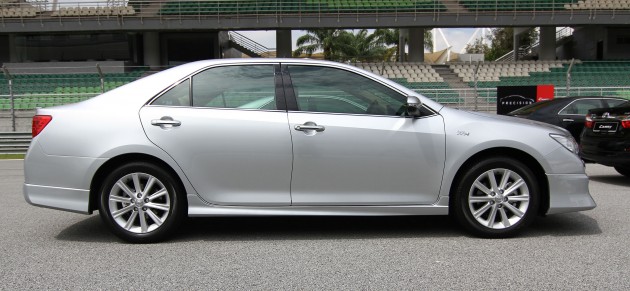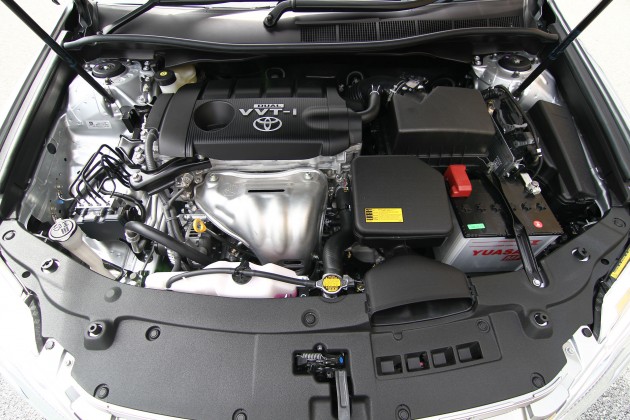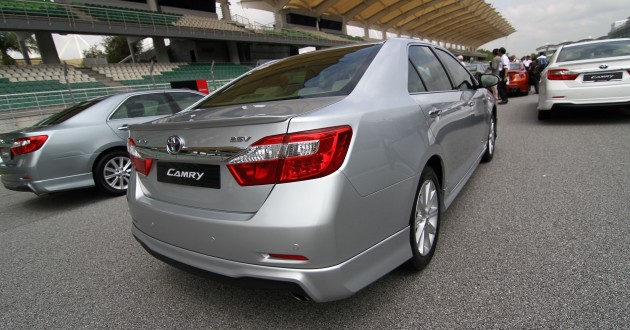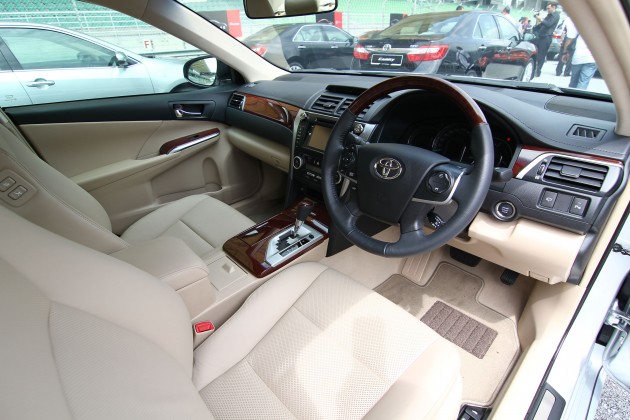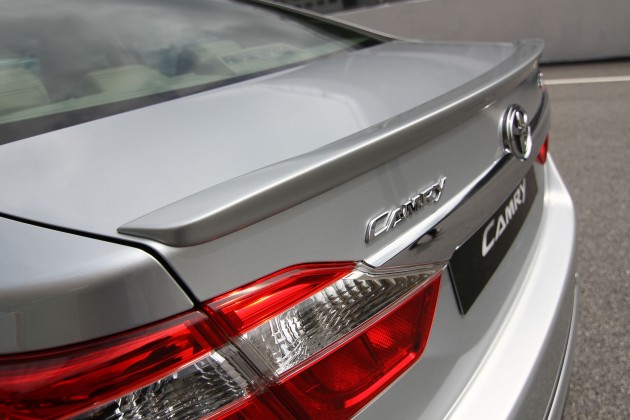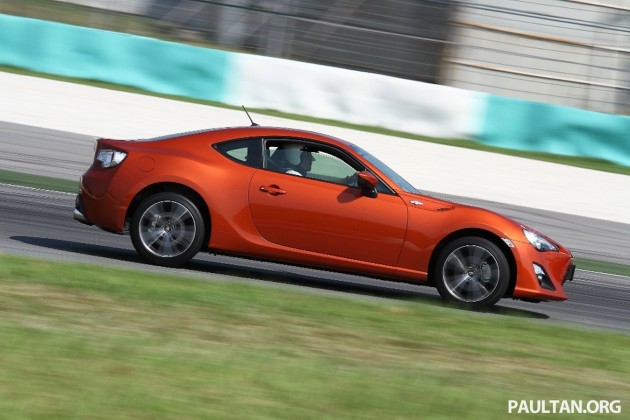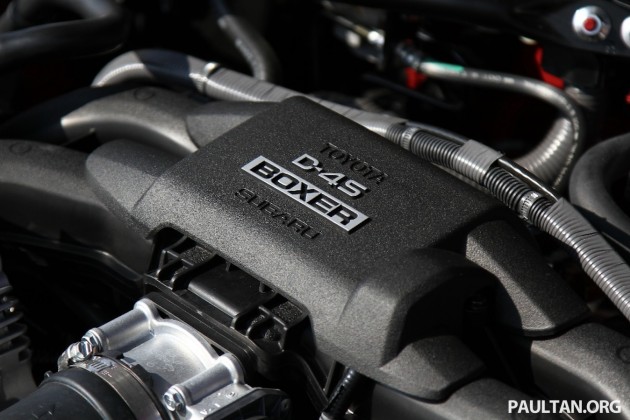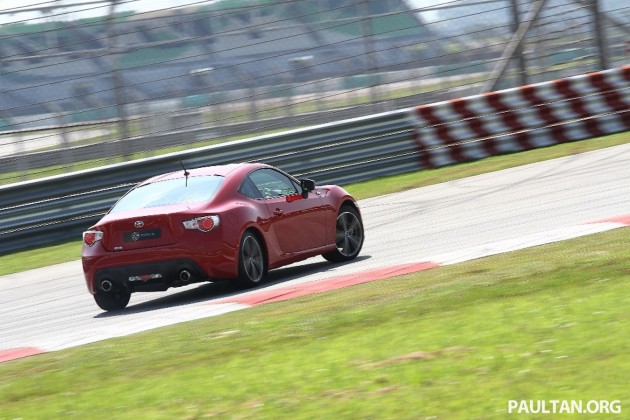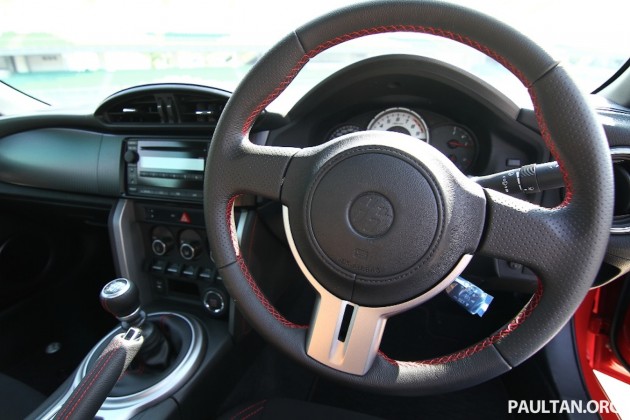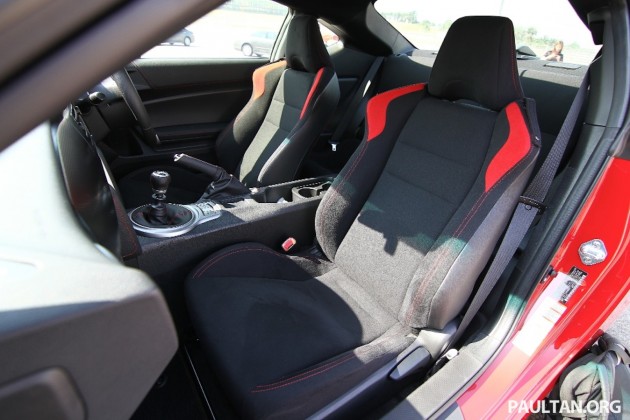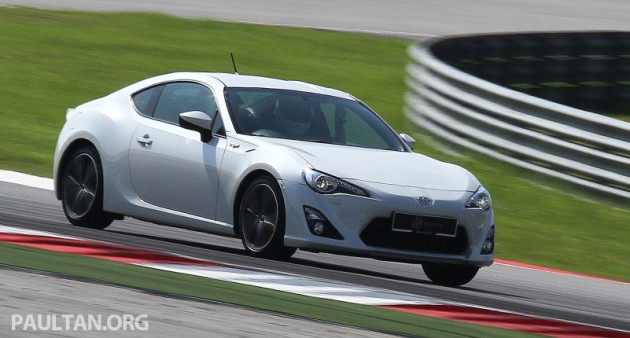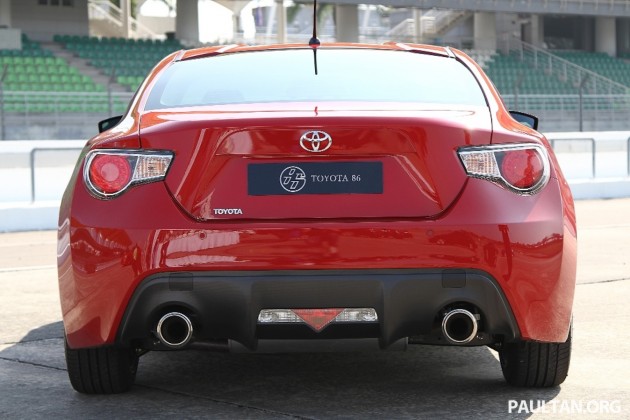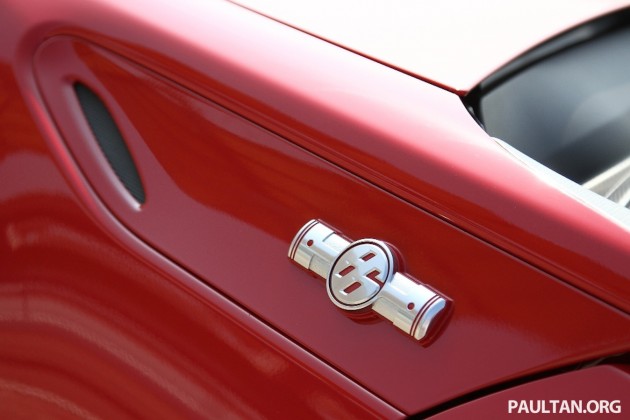We’re here in Sepang, where UMW Toyota earlier launched two Toyota models at a go – the much-anticipated 86 and the seventh-generation XV50 Camry. You’ve read Danny’s piece on the 86, so here’s the one on the Camry.
The sedan makes its debut in three variant grades, these being the top-of-the-range 2.5V, followed by the 2.0G and the 2.0E. The 2.5V, as its moniker suggests, wears a 2AR-FE 2.5 litre Dual VVT-i mill, with 181 PS at 6,000 rpm and 231 Nm at 4,100 for output numbers, paired to a six-speed Super ECT automatic transmission with sequential shifter.
As for the 2.0E and 2.0G, they share the same engine, which is the 1AZ-FE 2.0 litre VVT-i offering 148 PS at 6,000 rpm and 190 Nm at 4,000 rpm, and the partnering gearbox for both variants is the tried and trusted four-speed Super ECT automatic transmission with sequential shifter.
The 2.5 litre unit is supposedly a bit more frugal than the outgoing 2.4 mill – unofficial fuel consumption figures are 7.85 km per litre (7.69 km per litre for the 2.4) in city mode, while highway driving returns 9.27 km per litre compared to the 2.4′s 8.22 km per litre, according to the Camry’s chief engineer. No figures were available for the 2.0 litre unit.
The car measures in at 4,825 mm long, 1,825 mm wide and 1,470 mm tall, with a 2,775 mm-long wheelbase. As for weight, the 2.5V tips the scales at 1,480 kg, while both 2.0 litre variants weigh in identically, at 1,445 kg.
Plenty of chrome to be found on the outside, with the radiator grille, hood moulding, fog lamp cover, door belt, rocker panel moulding, rear garnish and exhaust muffler tip featuring the shiny stuff.
All three models feature wood-grain trim, with the 2.5 V and the 2.0 G adding chrome finishing for the air-conditioning knob, inside door levers and door scuff plate. The 2.5V features a beige leather interior, while the 2.0G gets a black leather one, and the 2.0E’s cabin is also in beige, though the outfit is in fabric.
Common kit found on the trio include HID headlamps, Optitron meters, electric power steering, dual-zone automatic climate control, ABS with EBD and brake assist, as well as a four-spoke, tilt and telescopic adjustment leather-wrapped steering (the 2.5V’s has additional wood grain trim). Both the 2.5V and 2.0G get cruise control and eight-way power adjustable front seats.
Unique to the 2.5V is a 6.1-inch touchscreen display with DVD player and reverse camera, sun shades for the rear and side windows as well as a push-start feature; the 2.0 litre variants continue on with a keyed ignition. Speaking of the interior, the company says that compared to its predecessor, the XV50 features significantly improved noise insulation, thus resulting in a quieter cabin.
As for remaining kit, the 2.5V also gets four airbags (front and front side), while the 2.0 litre models have two. It also features 17-inch alloys and 215/55 series tyres, while both the 2.0 litre variants wear 16-inch ones, wrapped with 215/60 rubbers. Interestingly, there’s no VSC on call across the entire model range – it would have been expected that the 2.5V would have had it.
Four colours are available for the locally-assembled car, and these are Silver Metallic, Medium Silver Metallic, White Pearl CS and a new shade called Attitude Black. Going for the White Pearl CS means forking out an additional premium of RM800, and the shade is not available for the 2.0E.
Pricing for the XV50 Camry is RM180,900 for the 2.5V, RM157,900 for the 2.0G and RM149,900 for the 2.0E, all on-the-road-with insurance. Chris Ng is having a go at the Camry as we write, so we’ll have the first drive impressions on the XV50 soon.





























© 2012 Paul Tan's Automotive News. All Rights Reserved.
This story originally appeared on Paul Tan's Automotive News on Fri, 01 Jun 12 06:48:02 +0000.
No related posts.
Link to full article

